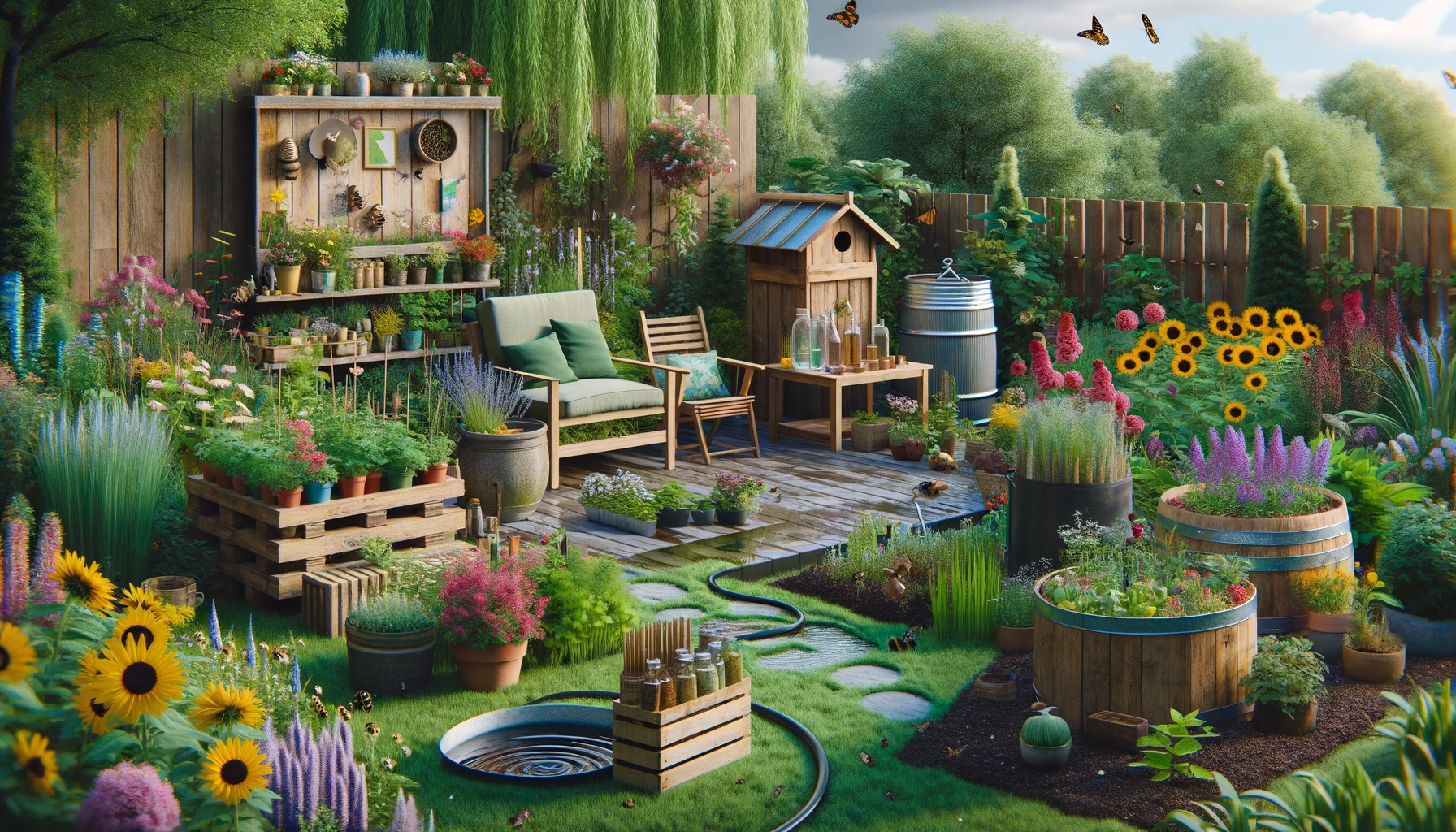Creating a sustainable garden is not just about reducing waste—it’s about using natural resources wisely, promoting biodiversity, and creating an environment that works in harmony with nature. By making your garden more sustainable, you can help protect the planet while enjoying a beautiful, thriving space. In this article, you’ll learn how to make your garden more sustainable with practical tips and eco-friendly techniques.
Step 1: Choose Native Plants
Native plants are adapted to your local environment, which makes them more resilient and low-maintenance.
- Better for Wildlife: Native plants provide food and shelter for local wildlife, including birds, pollinators, and insects.
- Less Water and Maintenance: Native plants require less water, fertilizer, and pesticides, which reduces your environmental footprint.
- Local Adaptation: These plants are already suited to your region’s soil, climate, and weather conditions, making them easier to grow.
Step 2: Reduce Water Usage
Water conservation is one of the most important aspects of sustainable gardening.
- Use Mulch: Mulch helps retain soil moisture, reducing the need for frequent watering and keeping the soil cooler during hot weather.
- Install a Drip Irrigation System: Drip irrigation delivers water directly to the plant roots, minimizing water waste and evaporation.
- Water Early or Late: Water your plants in the early morning or late evening to reduce water loss due to evaporation.
- Collect Rainwater: Install a rain barrel to collect water from your roof. This water can be used to irrigate your garden, reducing reliance on municipal water systems.
Step 3: Compost Your Garden Waste
Composting is a simple way to recycle organic waste and improve the quality of your soil.
- Turn Waste Into Fertilizer: Instead of throwing away food scraps and yard waste, compost them to create nutrient-rich soil for your garden.
- Reduce Landfill Waste: Composting reduces the amount of organic waste that ends up in landfills, which helps reduce greenhouse gas emissions.
- Improve Soil Health: Compost enriches the soil, improves drainage, and provides essential nutrients for your plants.
Step 4: Use Organic Fertilizers and Pesticides
Avoid using synthetic fertilizers and pesticides that can harm the environment.
- Use Organic Fertilizers: Organic fertilizers, such as compost, fish emulsion, or manure, are a great way to nourish your plants without the use of harmful chemicals.
- Natural Pest Control: Introduce beneficial insects like ladybugs and lacewings to control pests naturally. You can also make your own pest control sprays using ingredients like neem oil, garlic, or soap.
- Encourage Biodiversity: A diverse garden with a mix of plants, trees, and flowers will naturally attract beneficial insects that can help control pests.
Step 5: Recycle and Repurpose Materials
Recycling and repurposing materials not only saves money but also reduces waste.
- Upcycle Garden Materials: Use old pallets, containers, and wood to create garden beds, fences, or furniture. You can also turn old tires into planters or garden sculptures.
- Use Recycled Materials for Mulch: Instead of buying commercial mulch, use materials like shredded leaves, grass clippings, or cardboard to create your own mulch.
- Avoid Plastic: Limit the use of plastic in your garden. Opt for biodegradable plant pots or recycled pots made from other materials.
Step 6: Create a Wildlife Habitat
Sustainable gardening also involves creating a space that supports local wildlife.
- Plant for Pollinators: Choose plants that attract bees, butterflies, and hummingbirds. This will help support pollinator populations and improve the overall health of your garden.
- Provide Shelter: Include birdhouses, bat boxes, or insect hotels to provide shelter for wildlife. You can also leave dead wood, piles of leaves, and rocks for small critters.
- Create Water Sources: A small pond, birdbath, or shallow water dish will provide water for birds, insects, and other animals in your garden.
Step 7: Practice Soil Conservation
Healthy soil is the foundation of a sustainable garden.
- Avoid Soil Erosion: Use ground covers, mulch, and plants to prevent soil erosion, especially on slopes.
- Practice Crop Rotation: In vegetable gardens, rotate crops each year to prevent soil depletion and reduce pest build-up.
- Improve Soil Structure: Add organic matter like compost or well-rotted manure to improve soil structure and fertility.
Make Your Garden a Green Oasis
A sustainable garden is one that thrives in harmony with nature, minimizes waste, conserves resources, and supports local wildlife. By implementing simple changes, such as using native plants, reducing water usage, and composting, you can make your garden more sustainable and eco-friendly. These small steps will help create a beautiful and healthy environment for years to come.
